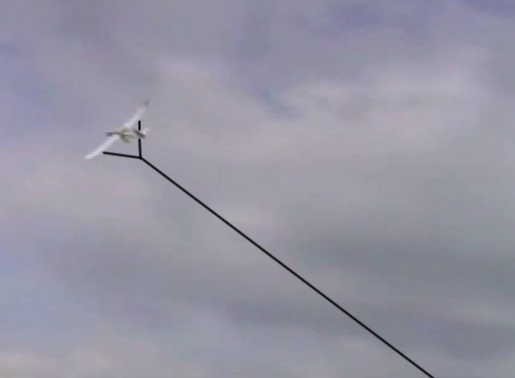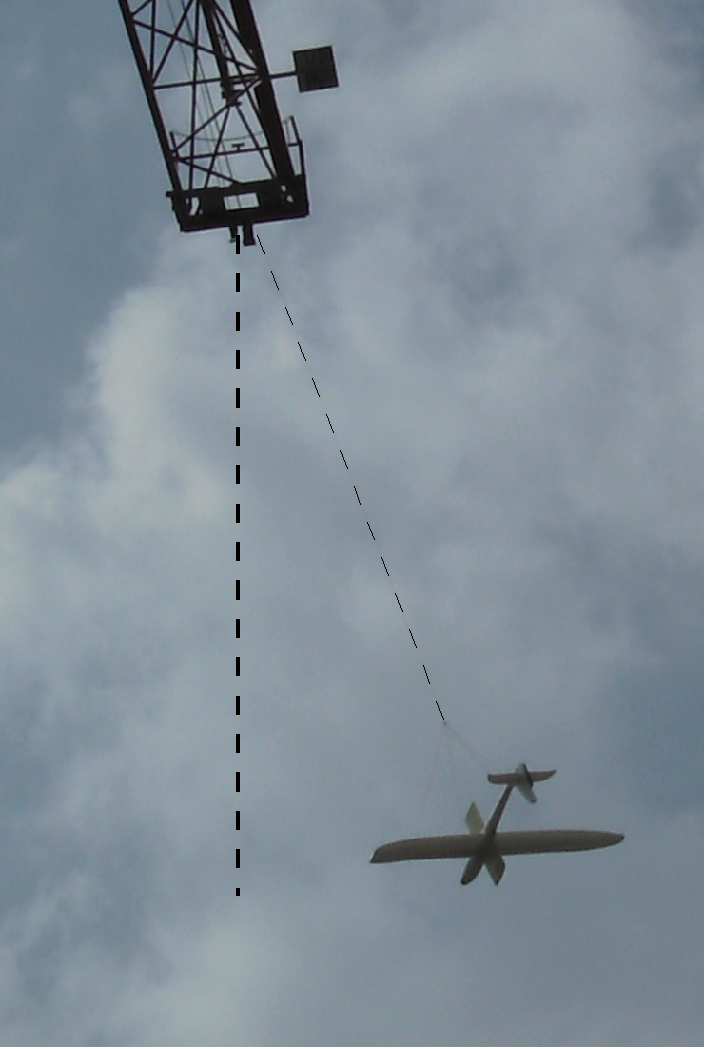This could be useful for a simple automation awes, which doesn’t move crosswind.
I would say not as much auto zenith rather just stays in place… This is normally due to the weight distribution and lift center. Weight read means auto zenith. The kite in the video was so large aspect ratio that the weight would normally always be close to the lift center, but I would guess he added stricture to the trailing edge to make it more or less always rear heavy
Let me add - auto zenith kites is a whole new world compared to steerable kites. A lot has been written about stabilizing single line kites. It is probably difficult to get this kite to work as a single line kite reliably in various windspeeds. The Peter Lynn Arc kite did this >15 years ago but it did not change the world.
For an inflated kite it’s surely interesting. For learning kitesurfing… maybe… For AWE, I fail to se a link right now…
You’re right, it’s not very relevant for awes - sorry.
Could be useful for awes, if it’s a cheap ~1kW yoyo system, that has a simple automated mode but can be steered crosswind manually.
I remember talking to Peter Lynn about auto zenith in 2007, at KiteShip, and how he smiled when I naively focused on the kite properties. He made me keep thinking until it was rather obvious.
Auto-zenith stability is primarily due to control-bar spread-anchor geometry adding just enough “staked out” stability. Use a wider bar and shorter lines for more auto-zenith stability. In ideal low wind, some power kites can balance from one anchor point “pasted to the sky”. Add more wind and kites will begin to “hunt”.
Not all kites in an AWES need to be the generating kite. Auto zenith can be very usefully employed in lift networks.
Auto zenith of a PL Arc is due to the weight distribution front-aft. It flies as a single line kite from the chicken loop, but not very well and only in some windspeeds.
You can also stabilize using two anchored tethers, but thats a different story altogether. I never tried that. But such kites have the negative of dealing with launch/reeling of several tethers at once…
Auto-Zenith is a natural property of any good power kite on a control bar held crosswind. Control bar width is enough “spread anchor geometry” to support Auto-Zenith in smooth moderate wind.
Part of AZ stability is the natural balance of the center of mass aft of the B-line span-wise load-path. All power kites balance this way, not just PL Arc.
Added mass aft is broadly parasitic and destabilizing if it swings like a pendulum without aero-damping. Optimal kite-stability mass-balance is delicate and well damped.
“Auto-Zenith” was clever PL marketing. A chicken-loop hooks-up stiff enough to maintain a control bar in stable position; the flier only needs to stand back-to-wind.
A relevant paper on this was done by Edwin Terink ( et al ) from TUDelft in 2011 back in inflatable kiteplane-times.
Link to paper
From a power kite design perspective for sports, auto-zenith is usually not a good thing. One mostly wants the kite to keep going in the same direction, or stay where it is, without control input. Single line lifter kites, the more auto-zenith the better 
Hi Reinhard,
Your house hopefully came out well. Great paper, very talented authors. Where did Terink end up?
The missing kiteplane design bit to this day is enough Vertical Keel area forward to fly rather than crash at the edge of the window, and help send the kite back toward zenith. Aft rudder area only works near-zenith. Almost all the EU kiteplanes still lack forward vertical keel or fuselage area.
Weak auto-zenith stability helps average users to relax in key flight modes (like beer drinking on the beach with the kite up), but for maximum control response, for performance, we all agree little or no auto-zenith is wanted. Auto-zenith will lock-out in high enough wind, as a symmetry-breaking phase change. You bring up a good issue with holding a tack, which again tends to be done by a consistent bar skew angle and bar-end (spread-anchor) stability.
Commenting further on [Terink et al] the y-bridle kite is a double pendulum. The tether and kite is an inverted pendulum. The roll axis is constrained by the y-bridle, no pendulum axis. A slight anhedral to C-kite geometry is preferred, no dihedral wanted. The kite yaw DOF is a pendulum and the rudder is damping surface as well as a “streamer” stabilizer. There is also wingtip “snowplow” stability factor [Holland] in the auto-zenith kite-design toolkit.
Kite turning has become an overdue issue in AWE, given such giant loops so many kiteplanes are flying. SS kites turn out to have top non-dimensional turn rate and tightest powered-up loops in the core power zone.
Great to see you on an “energy drone” team (KiteSwarms). You are by experience well prepared to pivot back to SS wings, if high complexity AWES survival-to-payback hope proves premature; well prepared if the pure power kite proves optimal over any kiteplane or energy drone for cheap reliable scaling in most-probable winds.
daveS
Once we are discussing flying a kite with autozenith or opposite (pull towards ground), this in general is a bad thing because it’s something that must be counteracted by bar input and thus, besides being annoying, induces extra drag.
The optimum is a kite that stays in place IMHO. If it must go somewhere, better down to the water where it may stay put in a depowered state.
The missing kiteplane design bit to this day is enough Vertical Keel area forward to fly rather than crash at the edge of the window, and help send the kite back toward zenith. Aft rudder area only works near-zenith. Almost all the EU kiteplanes still lack forward vertical keel or fuselage area
Already in 2009, 10 years before this post, EU kiteplanes rocked forward keels; at least in Leuven.
This is a snippet from the thesis of Ibens and Peeters.

Forward keel area is common in hobby kites; the Delta Kite in particular well embodies the idea. Makani’s kiteplanes developed their motorgen pylons as forward keels.
Nice Iben and Peters photos of a presumed negative lift (hanging kiteplane) experiment. “Auto-Nadir” hereby identified as such. Great example of forward keel; but the idea has not been adopted by most kiteplane designers.
kPower’s version of a passive flygen kiteplane under pilot-lift, with added forward keel area doubling as the rotor-guard-
Only skewed bar position holds a kite tack fairly stable against weak-by-design pendulum stability, not any special feature of the kite itself, although C-form Arc-form ‘ears’ (winglets) can promote either more authoritative turning or tracking.
Having belatedly watched the BrunoL video, its striking how he is talking about the kite keeping on a stable tack, rather than parking at zenith, as the term “auto-zenith” originally meant. Bruno used auto-zenith as the closest defined kite concept available.
Its clear in the video that the tilted bar position is keeping the kite at a set tack-angle, so its the bar-rig’s ability to hold a position that sets the kite. One sees Bruno occasionally correct the kite with an almost unconscious touch. His kite is flying well, but how much better is it to closely similar SS wings with no high-pressure tubing. Presumably its a better water-kite, but maybe not so good on land.
Lets define tack-stability as distinguishable from auto-zenith. KAP and kite-fishing are two other kite specialties that commonly set a stable tack to occupy different locations in the kite window. Also note that useful stability is progressively marginal at the low edges of the kite window. Flying low in general is a lower stability regime, closer to complex troubles.
